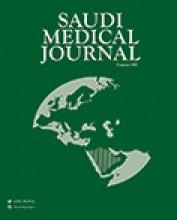Abstract
OBJECTIVE: To study the incidence and risk factors for postoperative infection following cesarean sections and major gynecological surgery.
METHODS: Postoperative infection was documented in the specified registers in all patients following cesarean sections and major gynecological surgery from January 1997 to December 1998. This study was a part of the prospective analysis of hospital-based morbidity and mortality in the Department of Obstetrics and Gynecology.
RESULTS: There were a total of 89 cases of postoperative infections amongst 4,032 patients undergoing major operations giving an overall infection rate of 2.2%. The morbidity due to infections was 3.3% in cesarean sections and 0.9% in major gynecological surgery. Abdominal hysterectomies had a higher infection rate than vaginal surgery. The most common causative organisms isolated were Enterococcus, Staphylococcus and Klebsiella species.
CONCLUSION: It was found that vaginal flora was a significant source of contamination during surgery, which could be minimised by local sterilisation methods. The high infective morbidity in abdominal hysterectomies needs further analysis of the risk factors. Infection surveillance with a regular review of antibiotic protocols is recommended.
- Copyright: © Saudi Medical Journal
This is an open-access article distributed under the terms of the Creative Commons Attribution-Noncommercial-Share Alike 3.0 Unported, which permits unrestricted use, distribution, and reproduction in any medium, provided the original work is properly cited.






